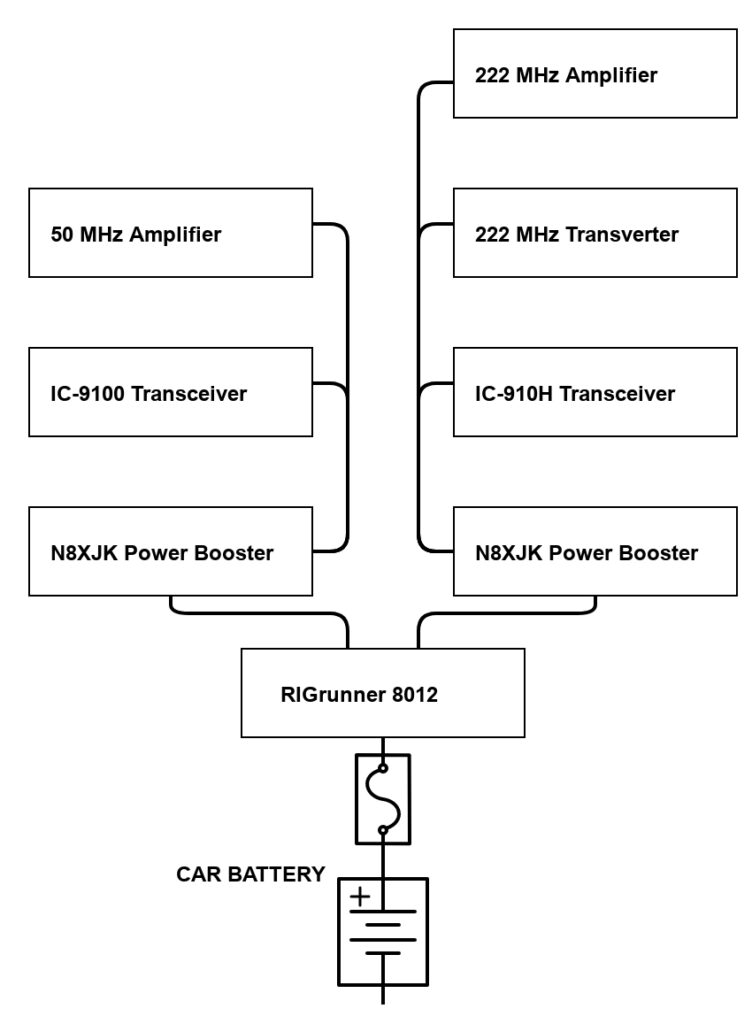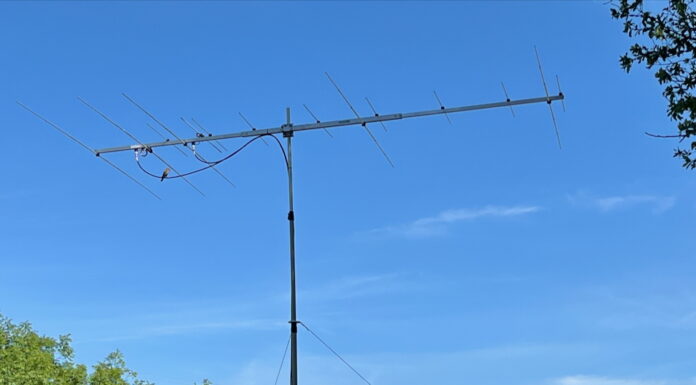In late 2019 I set up a much improved DC power system with 8 AWG cable from the car battery to a RigRunner 8012 power strip. For September 2020 I added an N8XJK Power Booster to make sure the 2 meter rig was fed properly at all times.
Next Steps in VHF Rover DC Power
So heading into the January 2021 VHF Contest, I felt I’d add a few improvements. This was perhaps needed to ensure that the new 222 MHz amp was powered up and to avoid dropping below about 12 VDC for both of the rigs.
The block diagram is shown below. I’m running an 80 amp fused connection from the car battery to the RigRunner 8012. This then puts out separate fused 40 amp connections first to the N8XJK power boosters and from there into the two rigs and associated amplifiers.
Since I’m a limited rover, in more ways than one, I’m always running less that 200 watts on 50 and 144 MHz, with 100 watts on 222 and 432. For my set up that means the IC-910H is running barefoot on 144 and 432, while the IC-9100 is running a 150 watt amp on 50 MHz as well as a transverter and 100 watt amp on 222 MHz. There are also a few items, preamps and fans, operated directly from the RigRunner with their own fuses.
So that’s what I’ll be taking into action during the January 2021 VHF contest. I hope it holds up and doesn’t go flat somewhere on the road!
For further insight into DC power systems for amateur radio I recommend KØBG’s website.










[…] Rover Updates — DC Power Systems and Power System and New Mast. […]